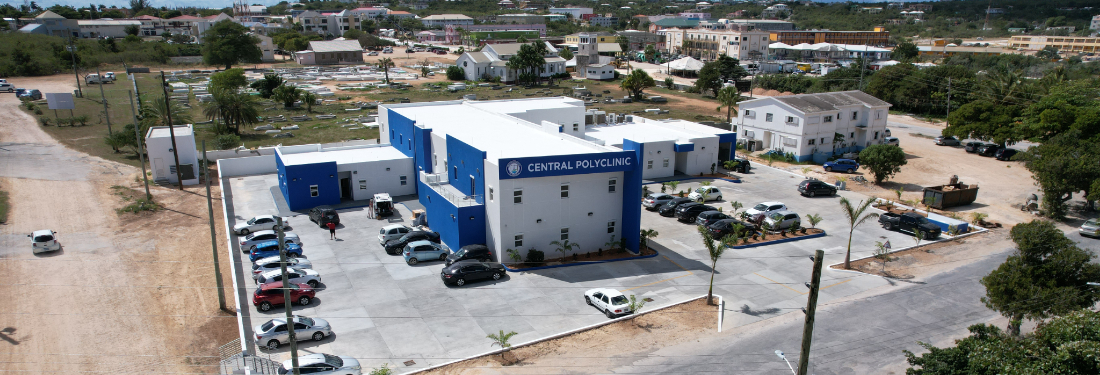Living through Hurricane Irma: Key lessons learned from the Anguilla Rehabilitation Programme

The date 6 September 2017 will forever be etched into the memories of Anguillians at home and abroad. It was Hurricane Irma’s greatest day, at the pinnacle of her career, and Anguilla was her centre stage. Hurricane Irma’s performance tested the resilience of all infrastructure to the beat of a category five hurricane, which resulted in costly damages to local homes, businesses, schools and healthcare facilities. Trees fell to the earth in submission and all power was lost for months after her unwanted performance.
Irma took the roofs of the Princess Alexandra Hospital’s main wards, damaged essential medical equipment and compromised the electrical system resulting in frequent power and water outages. The impact was so catastrophic that seriously ill patients had to be airlifted to the Cayman Islands for critical care, as the island’s only hospital was in jeopardy. At this point, there was an urgent need for the Princess Alexandra Hospital to be repaired, as the damage destabilised its ability to function and to provide adequate health services to the nation.
In collaboration with the Government of Anguilla, the UK Foreign, Commonwealth & Development Office launched the Anguilla Rehabilitation Programme, which focused on developing resilient healthcare, education and ports of entry facilities across Anguilla. This began the launch of island-wide projects and the mass collaboration of local and international stakeholders, contractors and project teams.
Serving as part of the project management team for the development of hurricane-resilient healthcare facilities, I learned several things during the journey. However, the following stand out to me as fundamental for project delivery.
1. Record requirements and be persistent with following up on tasks
When projects have multiple teams working together to ascertain what is needed and to provide the required services, tasks can often get lost in the chaos of chasing larger objectives. On the surface they may seem insignificant, but long term they may become a critical part of the overall delivery of the project and satisfaction of the customer.
Keeping track in detail of the requirements of end users, regulations of independent bodies and concerns of contractors, sponsors and other relevant stakeholders creates a clearer picture as to what can be done to achieve the overall objectives of the project. Therefore, it allows you as a project manager to harmonise the workflow and assist individuals with pushing through the completion of individual tasks.
At times, this will require you to go the extra mile, which will put you in a position to clearly see what needs to be done, as there are no traffic jams on the extra mile. Journalling is a good way of keeping track of these tasks; it creates a reference to remind you what needs to be done, which can be used to follow up with the relevant personnel.
2. Understand the roles of as many contributors to the overall project as possible
When working on major projects, there are large numbers of stakeholders involved in the process. At times, varied opinions, ideas and suggestions do conflict, but understanding comes through perspective. You may never be able to fully understand what it is like to be in the shoes of some stakeholders, but that should not stop you from trying.
This becomes important, because there are times as a project manager when you will have to be the voice of a particular department, stakeholder or individual, which will require your discernment. To do that effectively, you have to understand what rules they adhere to and what roles they are required to play.
Simply asking individuals why a requirement is necessary for their role and genuinely asking about the common procedures they follow or concerns they have gives a better understanding of the needs of the end-user, department and/or developer.
3. Reflect on the progress made (or not made)
As a project gets deeper into its development stage, there are times it may feel as if progress is stagnant. This is common when you are involved in the day-to-day operations of the project, which makes it harder to identify progress. This can cause a bit of dissatisfaction with the rate of progress.
Even when progress is slow, it is a form of growth and it should be acknowledged with the intention of finding solutions to move it forward. It is important to pause at times to reflect on this progress (or lack of it) by reading over documented work in journals, observing pictures or videos of previous stages and referring to sent emails. This helps to provide perspective and a renewed appreciation for the end goal of the project, which can inspire a realignment of team goals and project objectives.
Anguilla Health Recovery – Post Hurricane Irma won the Social Project of the Year award at the APM Project Management Awards 2022.
Check out the winter 2022 edition of Project journal for a feature on project management in disaster zones.


0 comments
Log in to post a comment, or create an account if you don't have one already.